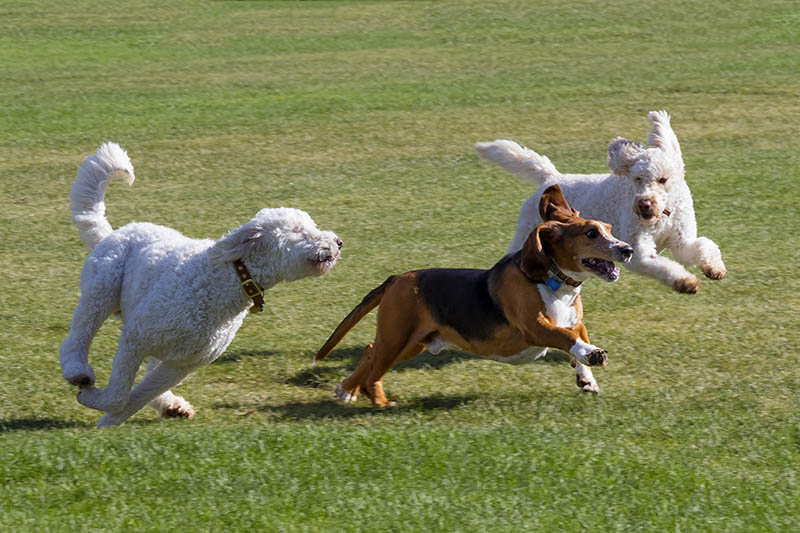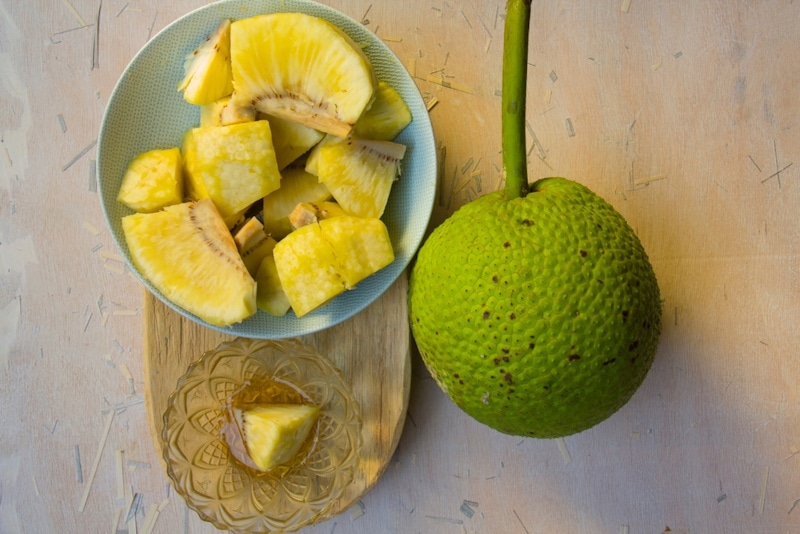Can Dogs Eat Chayote? What The Science Says!

Updated on
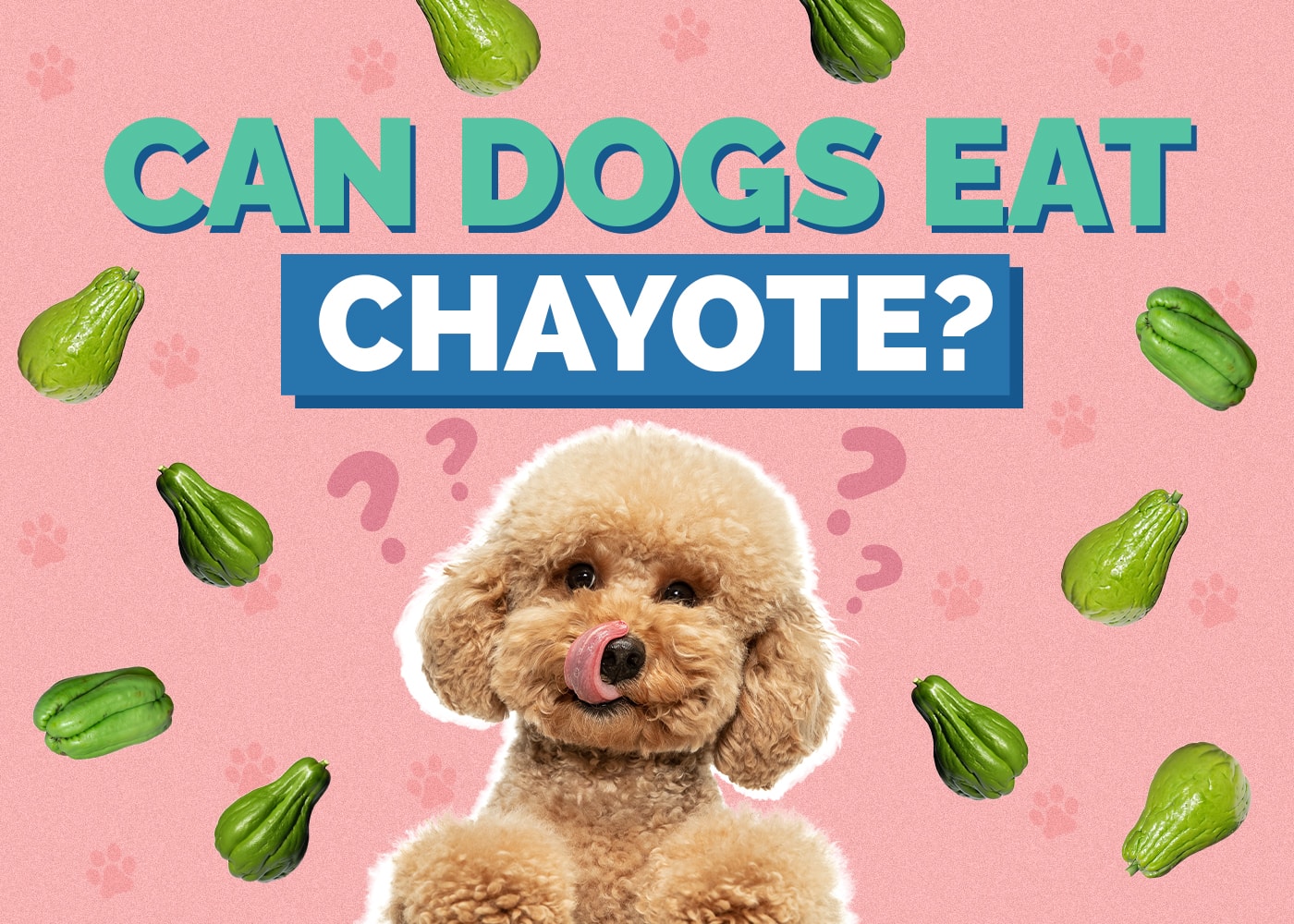
Chayote is a vegetable native to Mexico and Central America that is gaining popularity in the U.S. due to its many health benefits—for humans. It has a long history, having been cultivated by the Aztecs and Mayans as early as 500 B.C., and it remains widely available throughout Latin America today. It is also popular in Asia, from India to the Philippines, where it goes by many different names.
This pear-shaped gourd looks like an avocado or green squash, with thin skin that ranges from light green to white in color. Its texture is somewhat crunchy, and it has a mild flavor reminiscent of cucumber or zucchini, although some people say they can taste hints of melon when they bite into it. People can eat chayote raw or cooked, it adds a refreshing crunch to salads or stir-fries.
But what about dogs, can they eat chayote? The short answer is yes, a dog can eat cooked chayote—but it is better that they don’t eat it raw. Read on to find out how to prepare chayote properly and how it might benefit your dog.
 Why Raw Chayote is Not Great for Dogs
Why Raw Chayote is Not Great for Dogs
Raw chayote is becoming increasingly popular for its crunchy texture and subtle sweet taste. While the vegetable may be safe for humans to consume, it isn’t necessarily a good idea to feed your dog raw chayote. Ingesting this vegetable could lead to some unpleasant side effects that you don’t want your pet to experience. Most importantly, the seeds of the chayote are difficult for dogs to digest; they can cause an upset stomach or blockage if eaten in large quantities. Dogs may also suffer from irritation in their digestive tract after consuming raw chayote, which can lead to gas, diarrhea, or vomiting.
Though not fatal, these signs can still be uncomfortable and dangerous if very large amounts of plant matter are ingested and signs are left untreated or ignored. If your dog eats a few chayote seeds or a small amount of raw chayote—don’t panic. But you shouldn’t make this a core part of their diet.
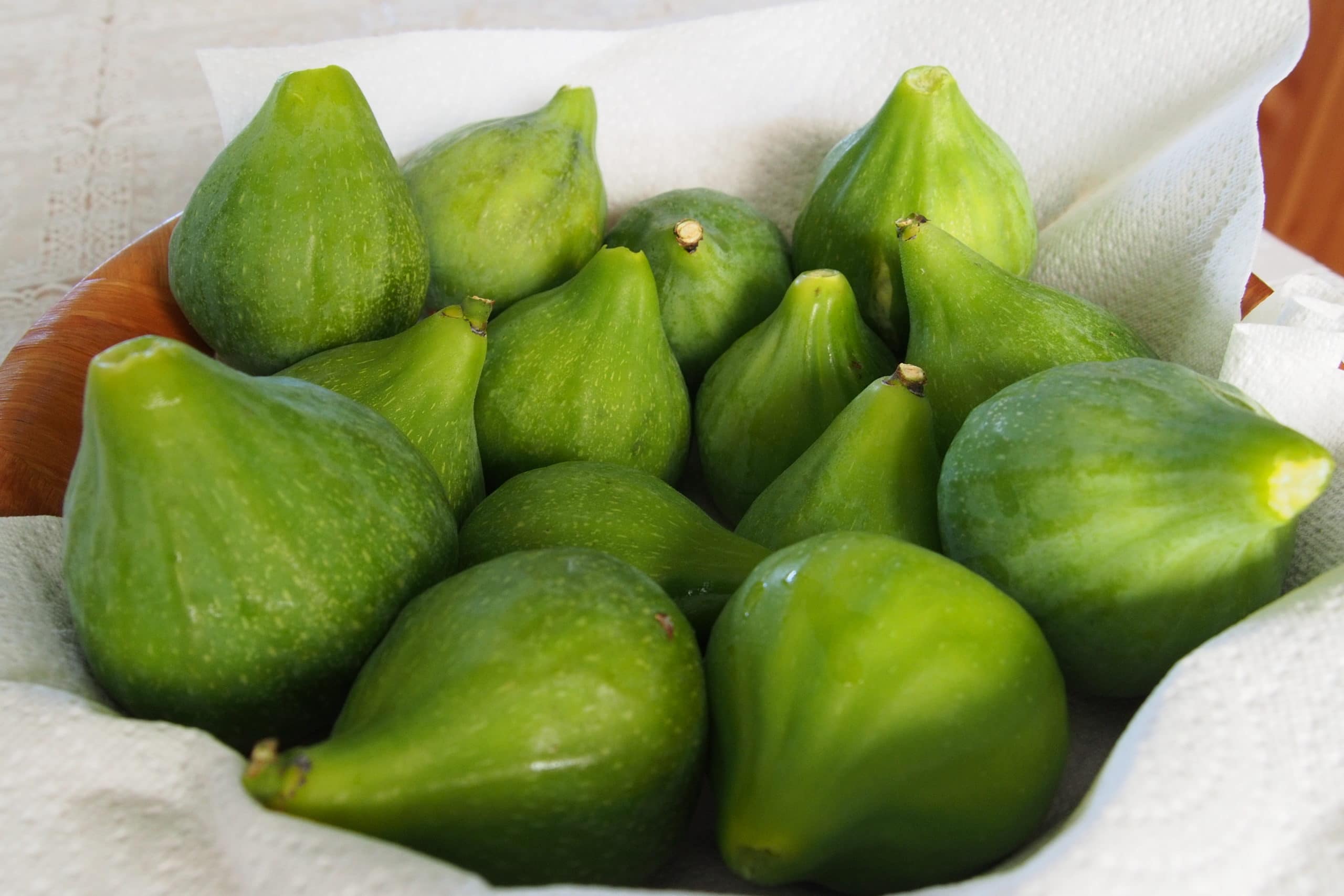
How to Prepare Chayote
Chayote is an incredibly healthy vegetable that could provide your furry friend with essential vitamins and minerals. To make sure your dog enjoys their meal follow these simple instructions on how to cook it. To start, remove the skin and seeds from the chayote and cut it into small pieces before boiling or steaming it for 5–7 minutes. Do not add salt or any other seasonings. Cook it gently and do not overcook it, as overcooking chayote will change its texture and destroy nutrition.
After boiling, let it cool before mashing the chayote until it’s soft and easy for your dog to eat. Finally, mix the mashed chayote with kibble or other dog food. Start by giving your dog a very small amount, to see how your dog reacts or indeed likes it. If they do enjoy the chayote it can be given as an occasional treat only.
Nutritional Content
Unfortunately, there is no research that directly addresses dogs and chayote, but we can extrapolate from the nutritional content of this vegetable and how dogs respond to different nutrients to understand how it may benefit dogs. Chayote is packed with essential vitamins, minerals, and dietary fiber. One cup of raw chayote contains just 28 calories and provides two grams of dietary fiber. It’s an excellent source of vitamin C, delivering more than 20% of a human’s recommended daily allowance for this important nutrient. Chayote also contains several B vitamins, such as thiamin, riboflavin, and niacin, along with other minerals like manganese and iron. Additionally, it’s low in fat and cholesterol.
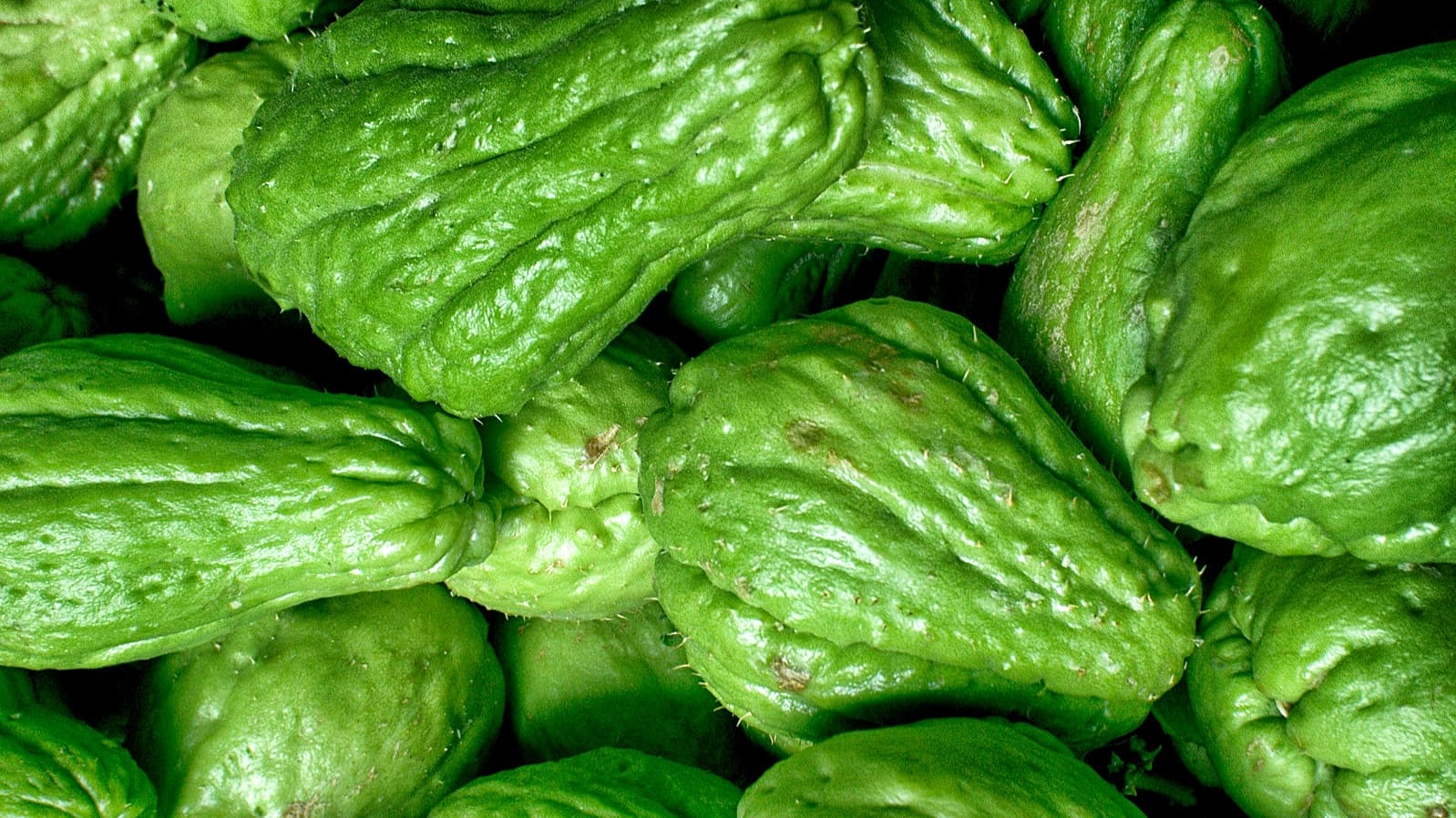
The Benefits of Chayote for Dogs
Vitamins, minerals, and antioxidants are essential to the health of our pets, including dogs. Ensuring that your canine companion has a balanced and healthy diet is one of the best ways to ensure they live a long and happy life. Vitamins C, B, magnesium, manganese, phosphorus, potassium, and selenium are all key components for providing your pup with a complete diet that will give them all the benefits they need.
- Vitamin C: Dogs can synthesize vitamin C in their livers which is advantageous as vitamin C helps boost immunity and is necessary for keeping your dog healthy from infections and disease. So, supplementing your dog’s diet with extra vitamin C is probably unnecessary.
- B vitamins: These vitamins are important for energy levels and metabolism, as well as skin and coat health. While minerals like calcium help strengthen bones, and magnesium keeps muscles relaxed, among other things.
- Manganese: This mineral is critical to metabolic enzymes, while phosphorus helps promote strong teeth as well as aiding in cellular energy production.
- Potassium: This is an essential electrolyte that is vital for nerve and muscle function.
Overall, chayote is a nutrient-dense vegetable that is a great source of minerals and vitamins for your furry friend—as long as you serve it cooked and in small amounts.
What is the Healthiest Vegetable for a Dog?
The digestive system of dogs is very different from humans meaning that they can’t eat everything that we can. Eating the wrong foods may lead to long-term health problems and, in extreme cases, possibly even death. Dogs are omnivores, and it is very hard to say which vegetable is the healthiest, however, dogs can eat all of the following fresh vegetables in small quantities, if prepared correctly, usually by boiling or steaming:
- Carrots
- Celery
- Green beans
- Peas
- Beets
- Cucumbers
- Yams
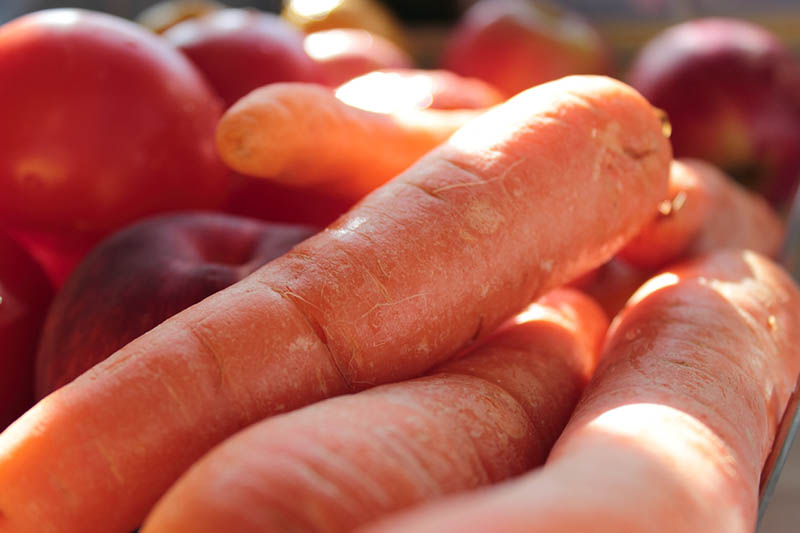
Which Vegetables Are Toxic for Dogs?
As noted above, dogs digest food differently from humans, and what might be good for you could be dangerous for your dog. As any dog owner knows, it can be difficult to keep our furry friends away from foods they shouldn’t eat. While many vegetables are perfectly healthy for dogs, there are some that need to be avoided. Knowing which vegetables your pup should steer clear of is important in order to keep them in good health.
Certain types of vegetables can have toxic effects on our canine companions, so it’s best to skip these when deciding what you’ll give your pup next time they’re begging at the dinner table. This includes unripe tomatoes and potatoes, cooked or raw onions and garlic—all of which contain toxins that could make your dog very sick.
 Conclusion
Conclusion
In conclusion, chayote can be a healthy addition to your dog’s diet as long as it is prepared correctly. As with any food, moderation is key and chayote should be given in small quantities. So, if you want to give your dog some of this delicious vegetable, make sure it is cooked without added salt or other unhealthy seasonings and that it is less than 5% of their total food on that day.

 Why Raw Chayote is Not Great for Dogs
Why Raw Chayote is Not Great for Dogs
